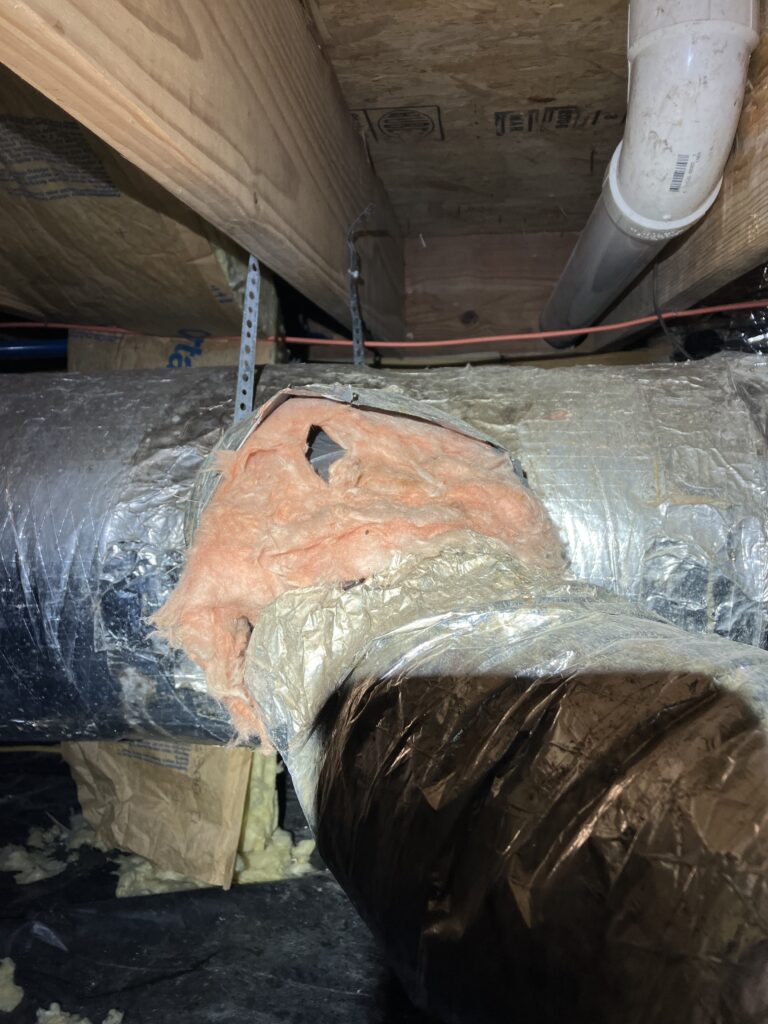Are you hearing scratching noises in your walls or discovering droppings around your home or business?
Rodents like rats and mice are more than just a nuisance—they can spread diseases, damage property, and contaminate food supplies. Not only are they some of the most common pests, but also rats and mice are the most destructive.
At Critter Control, we specialize in effective rodent control solutions tailored to Knoxville’s unique environment. Our team of pest experts understands the habits and behaviors of local rodent species and uses proven techniques to eliminate infestations and prevent future invasions. Whether you’re dealing with a single mouse or a full-blown rat problem, we’re here to protect your property and restore your peace of mind.
House Damages from Rats and Mice



Typical Signs of Rats or Mice Infestation
Seeing a rat or mouse is rare because they are clever and avoid human encounters. They are most active after dark or when they believe no one is home. Even if you can’t spot a rodent, there are other signs you can look for, such as the following:
- Droppings
- Gnaw marks
- Rat tracks
- Nests
- Holes or shreds in insulation
- Smudge marks on beams or walls
Professional Rat Rodent Control
Rats breed throughout the year, reproducing seven or eight times yearly with seven or more offspring per litter. It doesn’t take long for your home to become infested with rats. The more rats you have, the more damage occurs. Calling a rat rodent control expert at the first sign of rodent activity is crucial.
Trying to control a rat problem yourself can lead to mistakes that worsen the situation. Using the wrong traps, insufficient traps, or the wrong bait can mean the rat population in your home will continue growing. Placing a trap in the wrong place may lead to a rat dying within your walls. The smell of decay can be intolerable.
Rat control experts devise a comprehensive plan consisting of an inspection, trapping, removal, exclusion, prevention, and sanitization. They have the proper tools to assess and implement the rat control plan so that you and your family are safe and do not have to worry about future rat problems.
Professional Rodent Inspection
The rat control process starts with a thorough inspection from a certified professional, like our Critter Control service technicians, who will look for signs of rats in your home, such as:
- Entry points that can be as small as a quarter
- Cracks and openings around doors and windows
- Droppings and urine trails along baseboards or appliances
- Nesting activities
- Gnaw marks on wood, plastic, vinyl, wires, etc.
Based on the inspection, we implemented a custom extermination and rodent control plan.
Rodent Trapping and Removal
Trapping is the most effective method of rodent control. The size of the population will determine the number of traps, the types of traps, and the bait to use. Infestation size also determines the process’s length, which can range from a few days to weeks. With a large colony, other control measures, including tamper-resistant bait stations, may be required around the perimeter of your structure.
The sooner you call the professionals for help, the sooner trapping and rat removal can begin. They take care of everything, including proper disposal and sanitization, so all evidence of rats is removed.
Post-Removal Cleanup
After removing the animal, the wildlife service technician applies sanitization agents to ensure the area is clean and won’t affect you or your family. Any traces of rat feces or urine can lead to unwanted consequences, including attracting more rodents and growing mold spores. Technicians will thoroughly disinfect where necessary, including removing dead rats. With that, you can breathe easier in your own home. Beyond sanitation, our specialists will help with certain repairs, such as replacing damaged insulation.
Rodent Exclusion for Rat and Mouse Control
If you successfully remove every rat in your home but do not implement exclusion and prevention techniques, your home is at risk for future rat activity. One of our technicians’ first exclusion methods is to seal up all quarter-inch or larger entry points.
A few common entry points include:
- foundation cracks
- loose-fitting screens
- holes for pipes
- chimneys
- loose soffits
Rats will likely gnaw through materials like plastic, wood, and caulking to enter your home. The professionals will use sealants, wire mesh, and other rat-proofing structures to safeguard your home.
Recurring Rodent Control Solutions
The rat removal steps above will give your home a much-needed reset. However, rats are clever and persistent and may try to reenter your home. Their search for food, water, and shelter may lead them back to your home, where they may try to create new entry points.
You can take management steps after completing the rat rodent control process to ensure your home maintains safety. For instance, regularly scheduled monitoring appointments with a professional can ensure you don’t experience future rat problems. Technicians search for new entry points and any signs of rat activity inside and outside your home. If they find something, they can fix the problem right away.